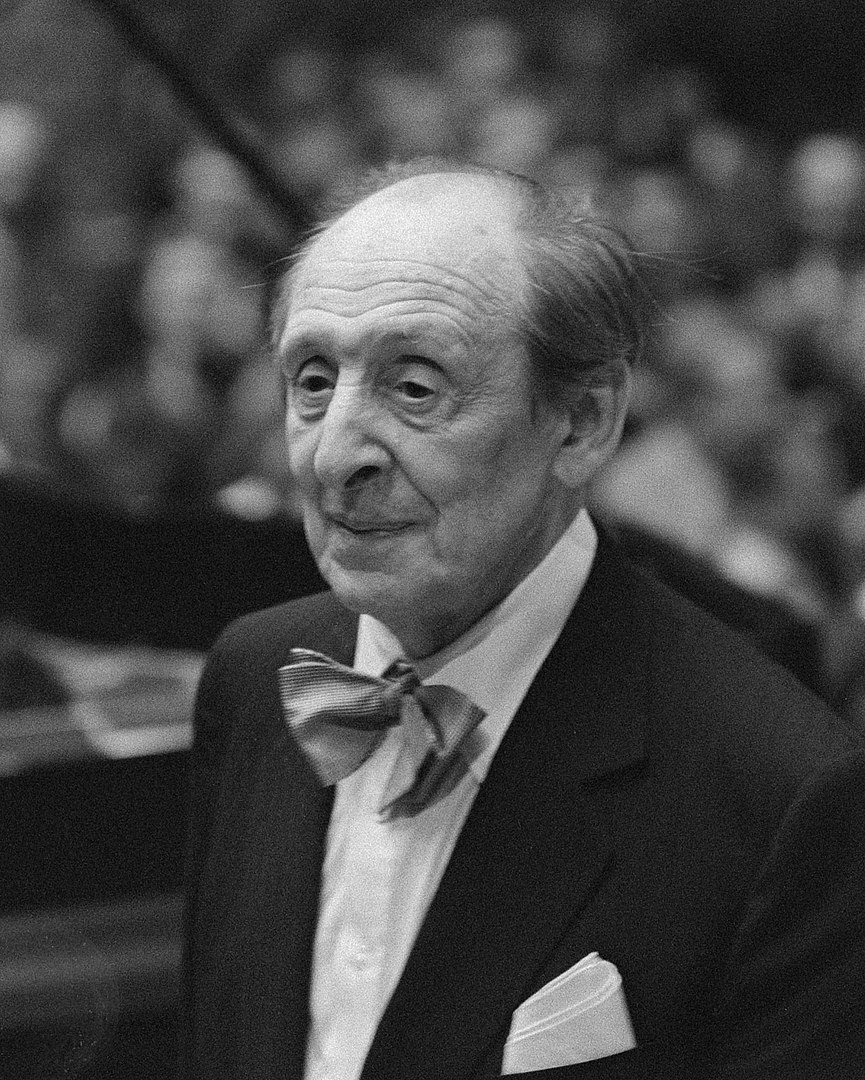October 1, 1903 –November 5, 1989

On this day, Russian-American pianist Vladimir Horowitz, one of the greatest pianists of the 20th century, was born in Kiev (Russian Empire at that time). Although that century is considered a non-romantic era, Horowitz is said to have proudly “held the flag” of romanticism. His first piano lessons were given by his mother, who was a pianist herself. At first, he wanted to be a composer, but the October Revolution, and immediately after, the loss of his family’s fortune, directed him towards piano. Soon after, in 1912, he was admitted to the Kyiv Conservatory, where he was taught by Vladimir Puchalsky, Sergei Tarnovsky and Felix Blumenfeld. He gave his first solo concert as a twenty-year-old in Kharkiv in 1920, and then he gave over twenty concerts without ever playing the same piece twice. Five years later he was already a recognized pianist. He went to Berlin the same year, then to Paris, and in 1928 he performed for the first time in America. On that occasion he played Tchaikovsky’s Concerto in B minor with the New York Philharmonic conducted by Sir Thomas Beecham, for whom it was his American debut. He performed with the conductor Arturo Toscanini for the first time in 1933, performing Concerto for Piano and Orchestra no. 5 of Ludwig van Beethoven, and later continued to collaborate with him both on concert podiums and in sound studios. Horowitz received American citizenship in 1944 and thanks to that he remains in that country and marries the daughter of the great conductor, Wanda Toscanini. His concerts were attended in large numbers by professional pianists, especially young ones, who wanted to copy his repertoire, technique and way of playing music. It could be said that even today many pianists are happy to listen to the performance of this great man, wanting to appropriate the aesthetics and way of playing. During concerts, his movements were rational, his body almost motionless, so his piano performance was described as very virtuosic, and at the same time calm. As a pianist, he was complimented for possessing “the fairest technique”, achieving great sound effects solely with his fingers, barely using a pedal. In contrast to his calmness and precision, it is surprising that he liked to change the musical text. This is evidenced by his performances with “reworked” notes of Mussorgsky’s Pictures at an Exhibition, added cadences in Liszt’s rhapsodies; he believed that Liszt would have nothing against such extraordinary additions. Of course, he was far more considerate of the works of Beethoven and Schumann. Many professionals would agree that he played Rachmaninoff, Liszt, Scriabin and Prokofiev with more sense and understanding than any pianist of his era. He had an exceptional affinity for miniatures, which is why Horowitz’s interpretations of Scarlatti’s compositions, Chopin’s mazurkas and waltzes and some of Schumann’s works stand out, which he played with grace, charm and incredible simplicity. Those who knew his work said that in the larger works of Beethoven, Schumann and Chopin, he was sometimes able to dwell so much on the details that he lost sight of the whole. According to music critics, Horowitz, although he was a somewhat introverted personality, caused great enthusiasm in concert halls. Many remember him as a modest, calm pianist, whose calm, composed playing gives the impression of ease, simplicity and playing on stage. Despite the receptions at the concerts, Horowitz became more and more insecure about his abilities as a pianist, so he withdrew from public performances several times. After his return in 1965, he rarely held solo concerts, and his first public appearance was on television, in the documentary film Vladimir Horowitz: The Last Romantic; he gave his televised concert on September 22, 1968 at Carnegie Hall.
